‘Today we have gardens but before we designed… entire landscapes’
Anishinaabe Studies professor Mkomosé on how Indigenous food forests shape our ecosystems
and what “having a connection to the land” means to him
Growing up, it’s hard to say whether I was into this sort of thing or not. I spent a lot of time outside, but never thought about what trees were around me, nor what plants were around them. I don’t remember ever learning about those sorts of things in school, aside from Grade 2 and 3 when Mr. Gomes took us to the creek from time to time.
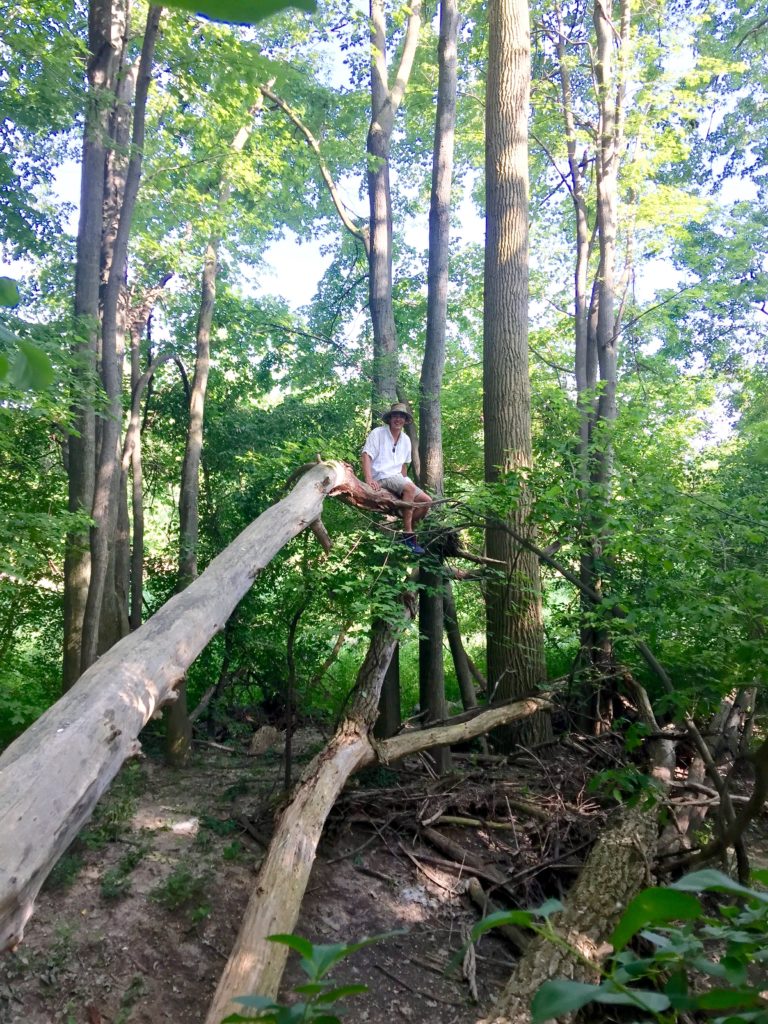
I spent most of my childhood playing and doing sports, oblivious to the larger world and universe around me — and to what I’d be called to as an adult. What I do remember is that my Ojibwe grandmother, Celina, was a gardener.
As I’ve grown up and learned more about my Ojibwe Ancestors and the importance of connections to culture and land — of taking care of the land — I’ve often gone back in my memories to her gardens. I would see where she had medicines growing, sage and datura, and the direction her wild roses grew. I must have paid attention because I’ll never forget how that felt.
As I evolved as a human in southwestern Ontario, I started paying closer attention to the Thames River. Known as Deshkan Ziibi in Ojibwe, or Horn of the Serpent River, it was and continues to be integral to all life in the region.
London is — well, it was — the Forest City, and it’s where I grew up. There really was a time when it was a city in a forest. I remember being high up in an apartment building in the summer and it was just canopy as far as the eye could see. Buildings came jutting up through the spaces between trees. It was amazing.
Today, I know there are 65 tree species in the Carolinian forest, and over 1,200 plant species, many found nowhere else on Earth. There must have been something about this place that led me to where I am now.
It really wasn’t until my third year of university that I started to pay much closer attention. That summer, I worked at an Indigenous Traditional Knowledge and Science Camp in Wikwemikong on Manitoulin Island. We would bring in scientists and have Elders with Traditional Ecological Knowledge (TEK) speak to the youth about plants, trees, waterways, medicine, and our mother the Earth. That’s when I began to realize that there was much more to my culture than the basic awareness I received as a child.
I always knew I was Ojibwe, but it didn’t affect my actions and how I lived in the world. Then when I started my Master’s work at Western’s Faculty of Education — still in my hometown, still living by that sacred river — I started to meet people who paid attention.
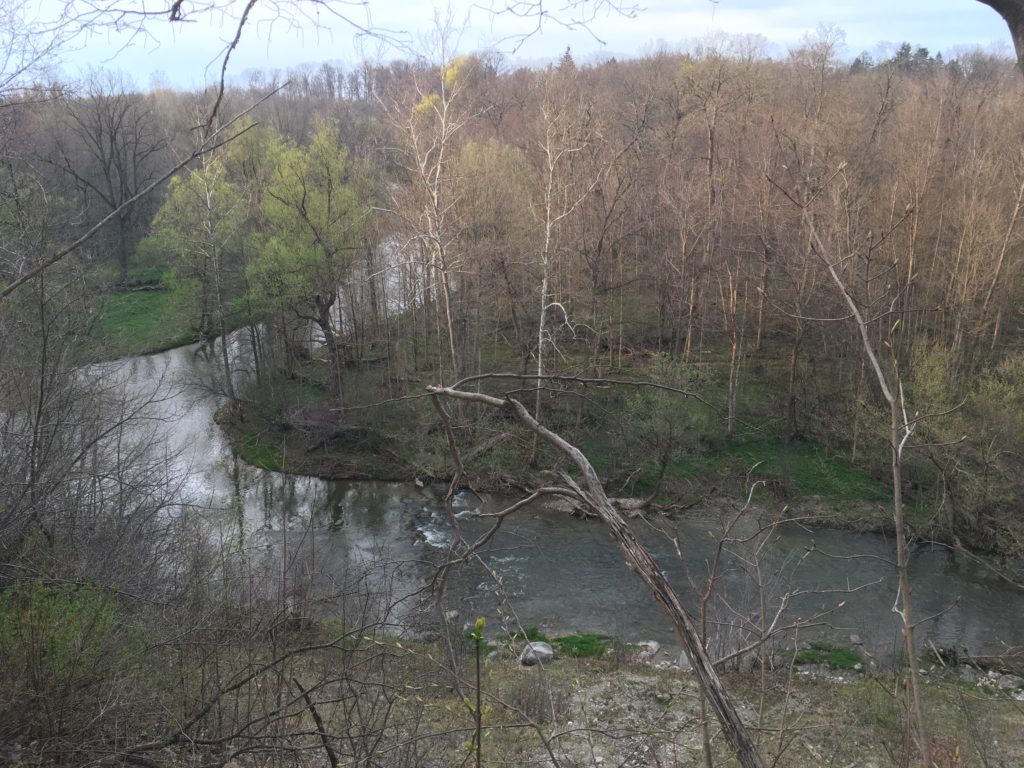
I was also reading so much about Indigenous peoples globally — my degree focused on Indigenous education — everyone was saying the same thing: “Connection to the land, connection to the land, connection to the land.”
I read that so many times, I started questioning what it meant. It seemed to be something people kept promoting about Indigenous peoples, but I could tell they were alluding to a deeper truth that I decided to learn more about.
London was once the homeland of an Iroquoian-speaking people that the Huron called the Attawandaron (the people who speak funny) and the French called the Neutrals. Their homelands extended all the way up the highway 401 corridor from Sarnia to Guelph, along the same path as the Deshkan Ziibi. These peoples had an alliance with the Mississauga Nation. This distinct group of Mississauga peoples spoke a dialect of Algonkian and thrived primarily at the mouths of the rivers leading to the Great Lakes.
Sometime around 1,200 years ago, this whole region was gradually converted to an Oak Savannah food forest, accented by prairie grasses and wetlands, by design. A food forest is essentially what it sounds like. It is a strategically designed habitat that focuses on building up several layers of the ecosystem to ensure food for all parts of that ecosystem throughout each of the seasons, with a long-term vision for generational thriving.
For the most part, those who I encounter as a professor and public speaker are stunned by the extent of the coordination that had to go into a food forest being established. It really is hard to imagine the interconnected relationships that depend on a food forest being integrated into the ecosystem, especially given the current private land ownership practices our neoliberal capitalist governance structure enables.
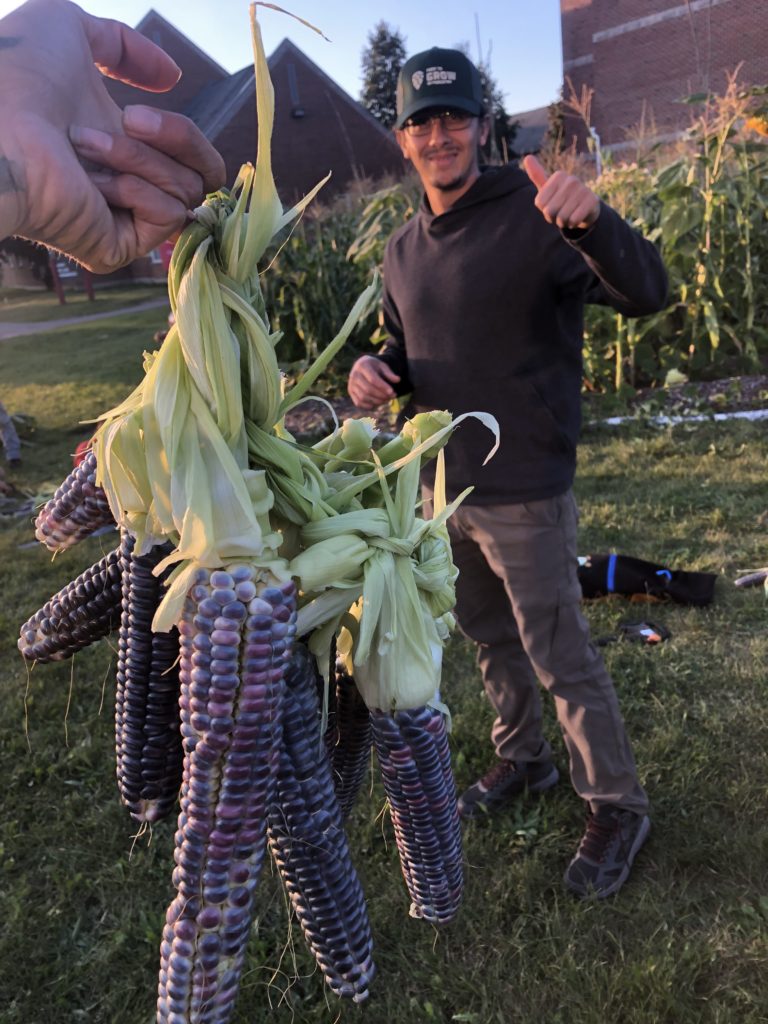
Created and enjoyed entirely by Indigenous peoples and all their relations, without any “modern” technology, we are talking about fifty or more generations working collaboratively to design one of the most diverse ecosystems on the planet.
Envision this for a moment: Over the course of time, specialists would have begun to map the land through storytelling, not on paper, and in turn share those stories amongst their community members so that a general map of the region becomes embedded within the consciousness of all members of the civilization.
These specialists would have been tracking the ecosystem’s progress, in all its diversity, including weather patterns, mineral locations, plant and tree growth cycles, fungi growth cycles, bird migrations routes and nesting patterns, mammalian den sites, fish spawning locations, reptile egg laying sites, and arthropod numbers, over time, to name only a handful. Based on pre-existing features of the land — such as wetlands, rivers, ground elevation levels, microclimates, and migratory patterns of some of the beings listed above — spaces would be selected where human habitation could be established.
I tend to see this ecosystem as having six or seven layers. At the bottommost layer I think of root plants like wild carrot, sassafras and trout lilies. The next layer, though it could also be considered the underlayer, is the fungi and mycelium, things like turkey tails, giant puffballs, and chaga.
The next layer is the ground plant layer and throughout each season there are many that rise up. Not all of these are edible specifically, but all are medicinal. Think of strawberries, trillium, and wild leek. Next you have the bush plants like raspberry, hazelnut, and cedar. Most of these foods and medicines must be enjoyed and processed at a specific time during the season, and all this ecological knowledge would have become embedded in the action-based education system, so training would have occurred for community members for the action of controlled burns.
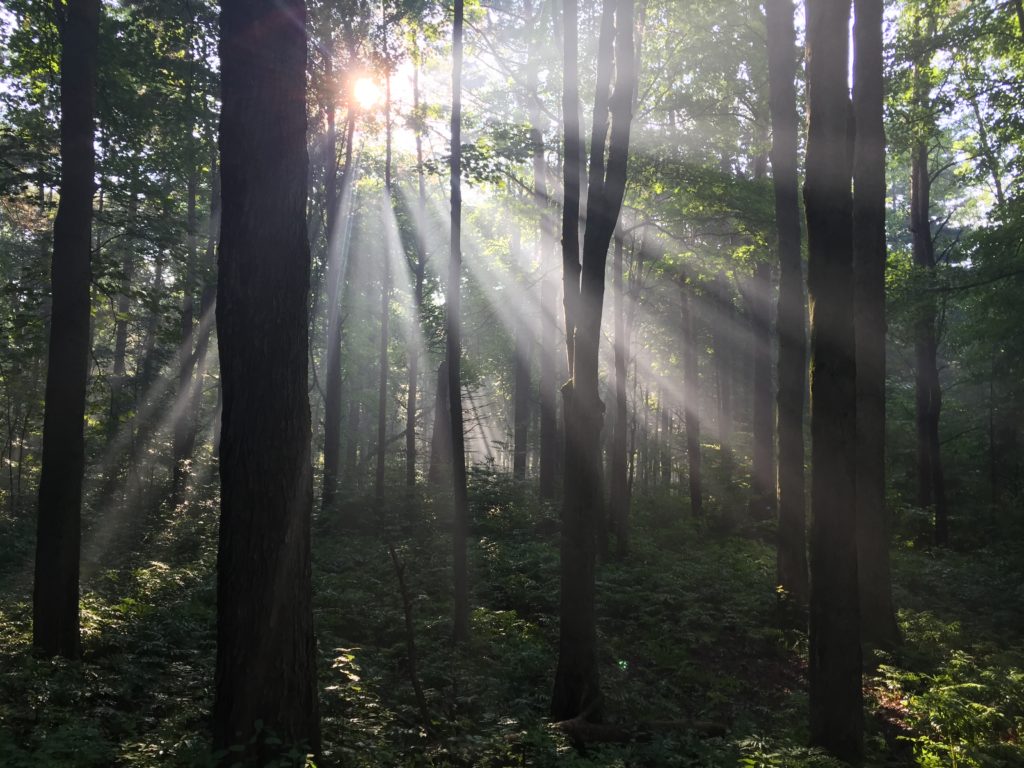
As we continue upwards, the next layer is the medium-sized trees like paw paw, Saskatoon berry and highbush cranberry. Finally, the uppermost layer is the heavy nut producing trees like Oak, Sweet Chestnut, Hickory, and Black Walnut. White Oak was principal to this food forest, based on the abundance of nuts it produces each season and the limited amount of processing required to eat them.
Indeed, something like 60 per cent of the diet of the regional civilization consisted of acorn flour. Another layer could be considered the vines like wild grapes or even the migratory patterns of birds like the passenger pigeon that are thought to have flocked in the billions during this period of time.
To me, Traditional Ecological Knowledge is more than a catchphrase. It is the entire depth of ethnobotanical teachings of peoples who spent their lives ensuring their citizens and all their relations would thrive long into the future.
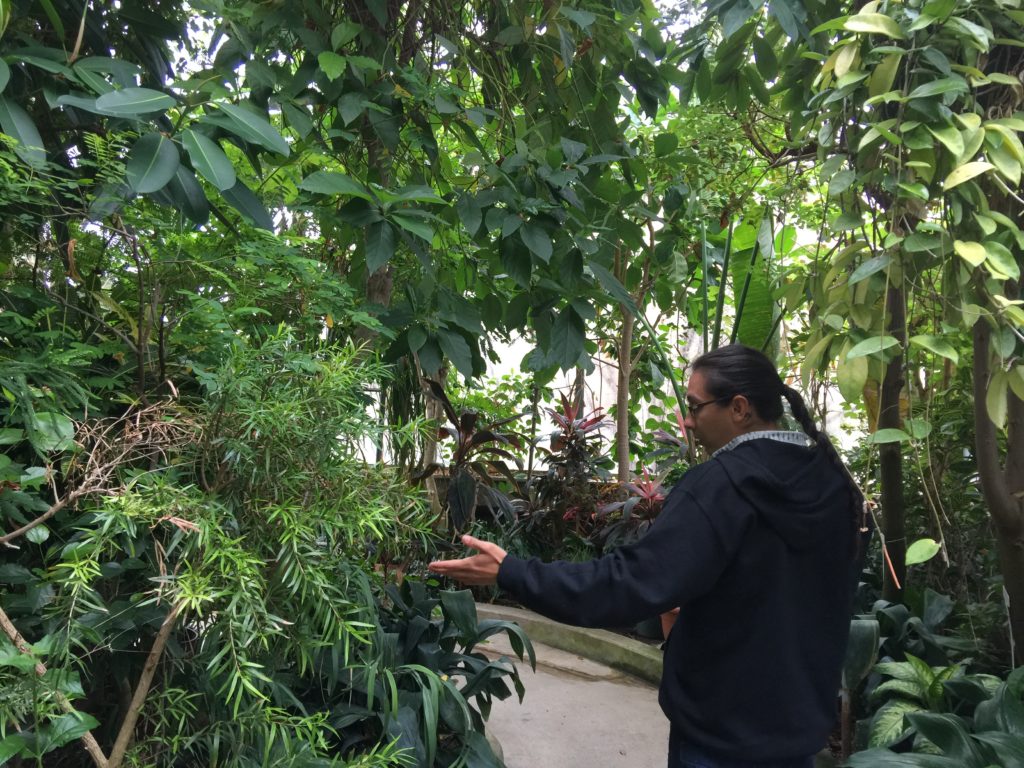
As my awareness of the past has grown, so too has my work of recreating space based on the teaching of the Ancestors and the inspiration of my grandmother. I realize that some of the seeds I grow have been passed down by a thousand generations or more, and I have a responsibility to acclimatize them now. We all do.
For three years, I’ve been teaching a course at the University of Waterloo School of Architecture called Indigenous Land Based Sustainability Practices in the Carolinian Zone: Knowledge for a Changing Climate. I also teach an adaptation of this course currently at Algoma University, based on the Great Lakes Forest.
I teach my students practical strategies to restore land, in whatever region they find themselves. It makes some angry that they’re only learning about the history explained above for the first time in university. Many wish they not only learned about but had the opportunity to practice it earlier in their lives, and I have to agree with them.
Many of the students recognize what has happened to our ecosystem as a direct result of capitalist exploits and come to realize how colonization is in part responsible for the devastating ecocide to the environment. A story we all share today. This knowledge changes students’ perceptions of Indigenous knowledge. More importantly, it allows them to realize they have the power to take action now.
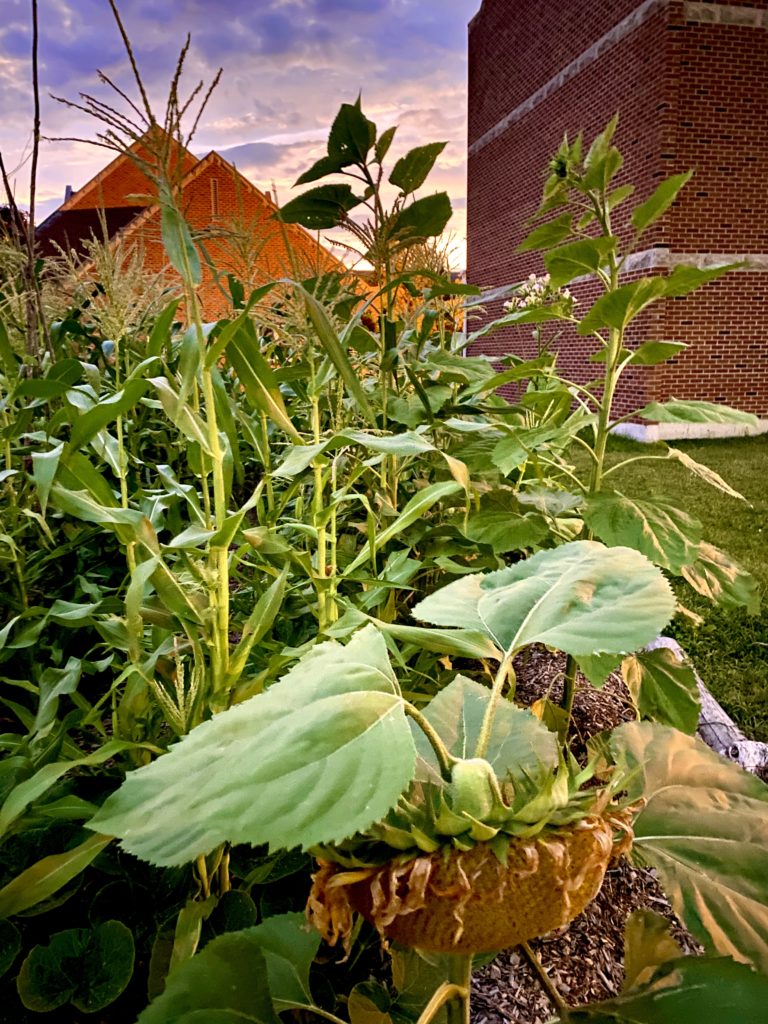
These are some of the best students, in my opinion, in the country. To witness their consciousness expand, to hear them say their lives are transformed by this knowledge. And it’s not me! It’s the Ancestors who’ve done it. I am simply a vessel, a servant to their wisdom.
They left a legacy for us to maybe one day embrace. They didn’t know if we would. They just left the pieces on the trail and slowly but surely people like me and others have picked the pieces up.
You can, too! Start to get to know your local ecosystem one season and one species at a time. Together we can create a mosaic of awareness of what the knowledge of Mother Earth is today and what is possible when we take the time to appreciate the abundance she provides.
Today, I cannot see the world the way I did as that child frolicking in my grandmother’s garden, as a passive observer. Now I realize what my grandma must’ve understood all those years ago: that there’s a place for every being on this planet, and if we honour each other’s space, not only will they thrive, but they will help us thrive as well.
That’s what it means to me to have Indigenous land-based knowledge. I don’t love the word garden, but I use it because people can relate to it. Today we have gardens, but before we designed forests. We designed and enhanced entire landscapes that allowed a multitude of organisms thriving. We weren’t gardening, we were creating a paradise.
Through our individual and collective actions, we were showing the next seven generations how much we cared about their well-being — and we can do it again.
Mkomose (Dr. Andrew Judge) is an Assistant Professor of Anishinaabe Studies at Algoma University, and has been sessional Lecturer at Sir Wilfrid Laurier University and University of Waterloo and Coordinator of Indigenous studies at Conestoga College. He specializes in traditional Indigenous knowledge, ethno-medicine, and land-based learning.

